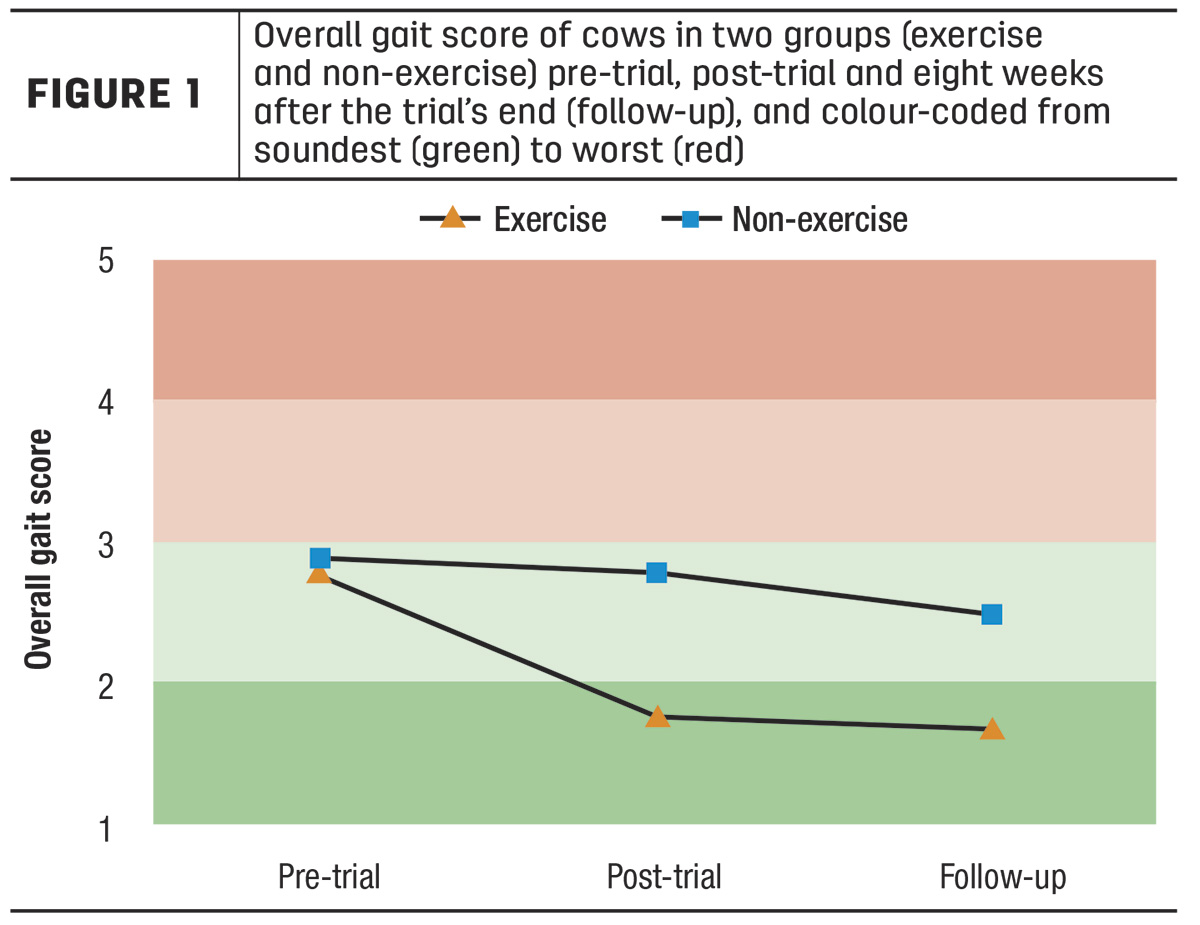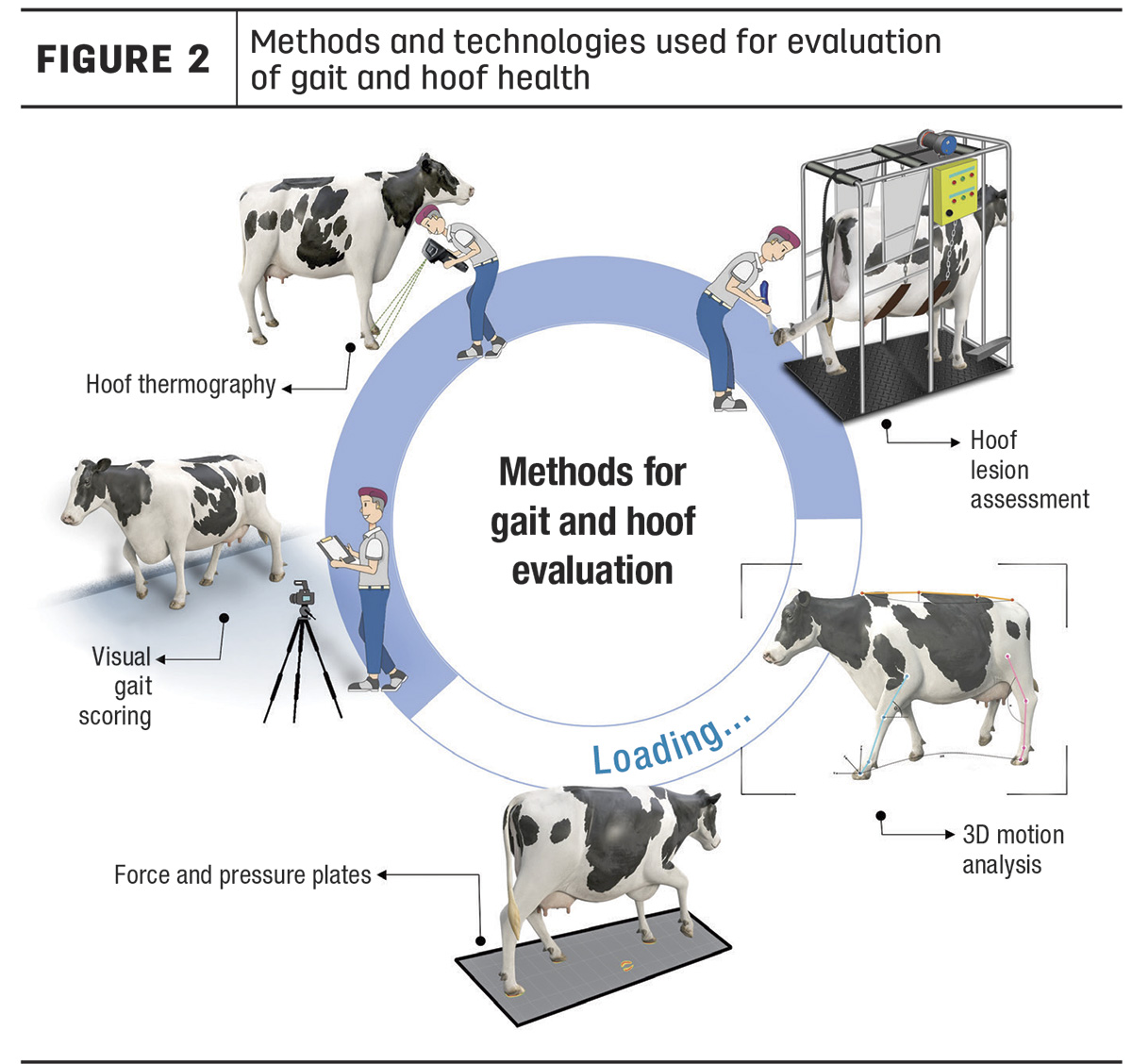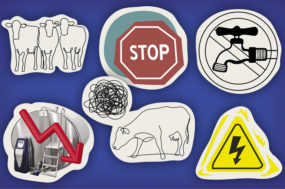The dairy industry's reliance on indoor housing systems that restrict animal movement has raised concerns about animal welfare. Tiestalls, the most restrictive of these systems, limit cows' natural movement; however, if not managed properly, more open systems such as freestall barns can also be restrictive due to factors such as overstocking or improper flooring.
Although many dairy farms in Canada still rely on facilities that restrict animal movement without providing pasture access, studies have shown that cows benefit greatly from spending time outdoors. Some farmers are beginning to complement indoor housing systems with partial access to outdoor exercise yards which can offer similar benefits to pasture without requiring year-round or seasonal access – a practice recommended by Canada's Code of Practice.
Continuous restriction can cause cows' locomotor abilities to decline over time, making them more susceptible to gait abnormalities that range from slight deviations from normal gait to clinical lameness. Previous studies suggest that pasture access can aid in the recovery of lame animals, possibly due to the more comfortable footing and increased movement opportunity it provides. Yet, little is known about how enhancing movement opportunities through partial outdoor access impact the gait and hoof health of non-clinically lame cows housed in prolonged movement-restricted facilities, particularly those housed in tiestalls.
To fill this knowledge gap, an experimental study was undertaken at McGill University by a research team led by Dr. Elsa Vasseur. The study investigated the effect of providing one hour of daily access to an outdoor exercise yard on the gait and hoof health of non-clinically lame lactating Holstein cows housed in a tiestall barn. The research was part of a broader series of studies designed to evaluate the benefits of partial outdoor access on various aspects of dairy cow welfare and behaviour.
The cows were selected based on locomotor function, excluding cows that were lame, and then randomly assigned to one of two groups. The exercise group received one hour of daily outdoor access, five days per week for five weeks. The non-exercise group remained inside and served as the control group. To evaluate the cows' gait and hoof health, the research team used a variety of techniques and technologies at three data collection periods: pre-trial, post-trial and eight weeks after the trial’s end (follow-up).
The gait of the cows was assessed using a five-point visual gait scoring system. Video recordings of the cows walking in a designated testing facility were used to evaluate six different gait attributes as well as an overall gait score. In addition to the assessment of gait abnormalities, it was important to conduct a direct evaluation of the cows' hoof health via clinical examination of hooves in a trim chute to evaluate hoof lesions. High-resolution thermal images captured through hoof surface thermography were also used to detect early and subclinical signs of hoof pathologies. This enabled a comprehensive assessment of the cows' hoof health.
After five weeks of outdoor access, the exercise cows showed a numerical improvement of 1 to 1.2 points in the overall gait score (Figure 1) and three gait attributes.
 These improvements were sustained across the eight-week follow-up period when no more exercise access was provided. However, these changes were not statistically significant between the groups or over time, possibly due to factors such as selection against lame cows, as cows with lower gait scores may have had less room for improvement. Nevertheless, the lab was equipped with advanced gait analysis technologies, including 3-D motion capture, force and pressure walkway platforms and accelerometers to enhance objectivity and accuracy in detecting even small changes in the cows' gait. The data collected from these technologies are currently being processed (Figure 2).
These improvements were sustained across the eight-week follow-up period when no more exercise access was provided. However, these changes were not statistically significant between the groups or over time, possibly due to factors such as selection against lame cows, as cows with lower gait scores may have had less room for improvement. Nevertheless, the lab was equipped with advanced gait analysis technologies, including 3-D motion capture, force and pressure walkway platforms and accelerometers to enhance objectivity and accuracy in detecting even small changes in the cows' gait. The data collected from these technologies are currently being processed (Figure 2).

Assessment of the cows' hooves during the data collection periods showed no cases of hoof ulceration, with only 38 instances of sole hemorrhages observed. Most of these hemorrhages were slight discolourations with a few cases ranging from mild to significant red or blue colouration of the sole. Statistical analysis of claw lesions revealed that neither the prevalence nor the severity of sole hemorrhages changed for either treatment group over time, showing no deterioration or improvement in hoof health. The lack of significant change may be attributed to the fact that the cows began the trial with a low prevalence and severity of claw lesions, thus providing limited scope for improvement. Additionally, hoof thermography findings, which focused on minor and subclinical changes, supported the hoof lesion assessment as no differences between the groups were detected during the five-week outdoor access period.
Despite the belief that walking cows on hard, rough and uneven surfaces could lead to mechanical stresses and hoof disorders, the results of this study indicated no negative impact of partial outdoor access on overall hoof health.
Taking all of this into account, the study suggests that granting lactating tiestall-housed cows that initially display minor gait difficulties one hour of daily outdoor access may potentially result in gait enhancement without negatively affecting hoof health. However, visual gait scoring may miss small changes in the cow’s locomotor ability, emphasizing the need for more precise gait analysis methods.
The study used advanced gait analysis technologies, and the results of these methods are currently awaited to better understand the mechanisms behind the observed changes. Additionally, further investigation is needed to determine whether the possible positive changes resulting from outdoor access are due to improved fitness or increased confidence gained through more locomotor activity after prolonged stall confinement. It is also important to investigate whether lower levels of outdoor access can still yield positive effects on cows' gait and hoof health. The study's results hold importance for both producers and the industry as they illustrate minor alterations in management practices can enhance cow welfare and sustainability.








